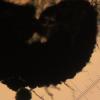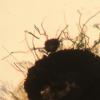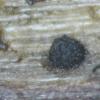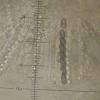
20-12-2025 23:08
Patrice TANCHAUDBonsoir, récolte sur sol sablonneux dans l'arri�

21-12-2025 09:32
Hello.A tiny ascomycete found embedded in wood in

20-12-2025 15:47
Mirek GrycHi.These grew on pine wood that was heavily covere

18-12-2025 21:17
Pol DebaenstThe identification took me to Byssonectria deformi

15-12-2025 07:09
 Danny Newman
Danny Newman
indet. Rutstroemiaceae sp. on unk. fallen leavesMc

19-12-2025 10:10
Patrice TANCHAUDBonjour, récolte réalisée en milieu dunaire, a

18-12-2025 17:23
 Bruno Coué
Bruno Coué
Bonjour,je serais heureux d'avoir votre avis sur c
This description fits Synaptospora plumbea quite well, but what about the brown hyphae shown on one of the pictures? Could these be part of the basal mycelium (mentioned in the Helminthosphaeriaceae key in Miller et al. 2014)?
The ascomata are descibed by Huhndorf et al. 2004 as "superficial", does that exclude erumpent ascomata (cf. figure 1 in that paper which appears to show half immersed ascomata)?
The key question is whether the collection belongs to the Helminthosphaeriaceae. Are there other taxa outside this family with similar features (e.g. Baermaellia but perithecia in a brown stroma and the species with germ split longer spores)?
Help much appreciated!
Eduard




